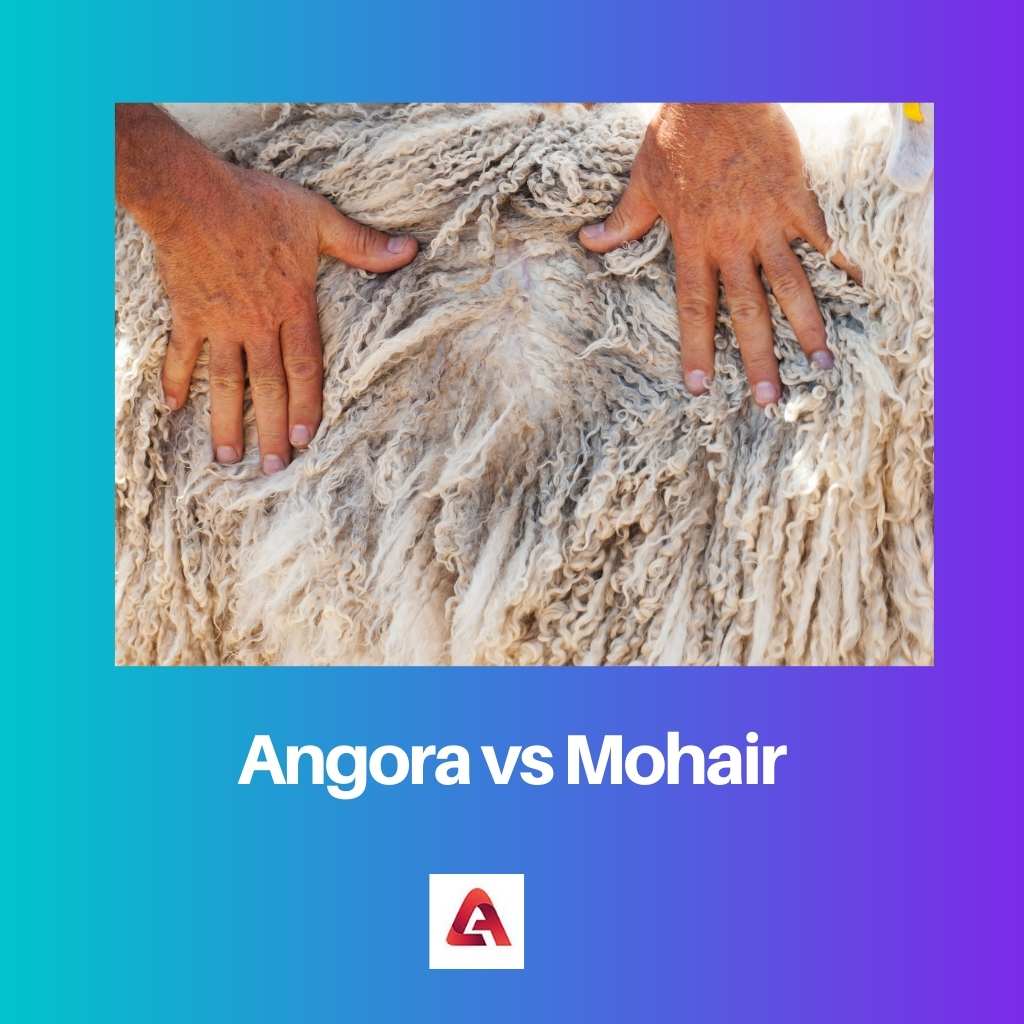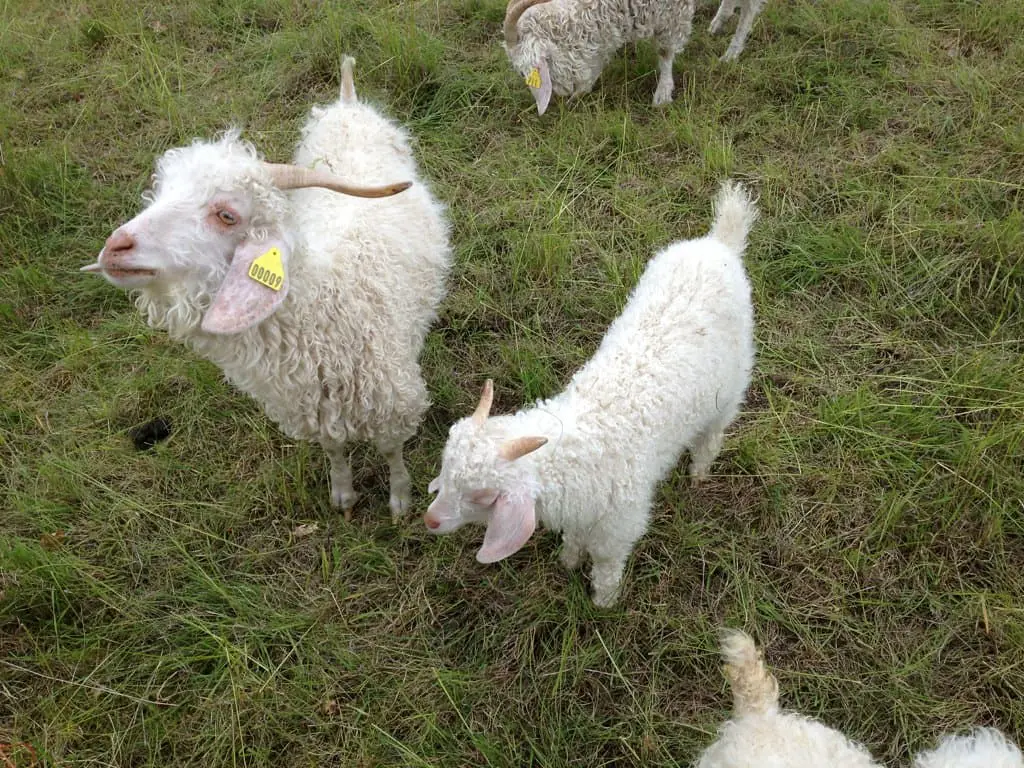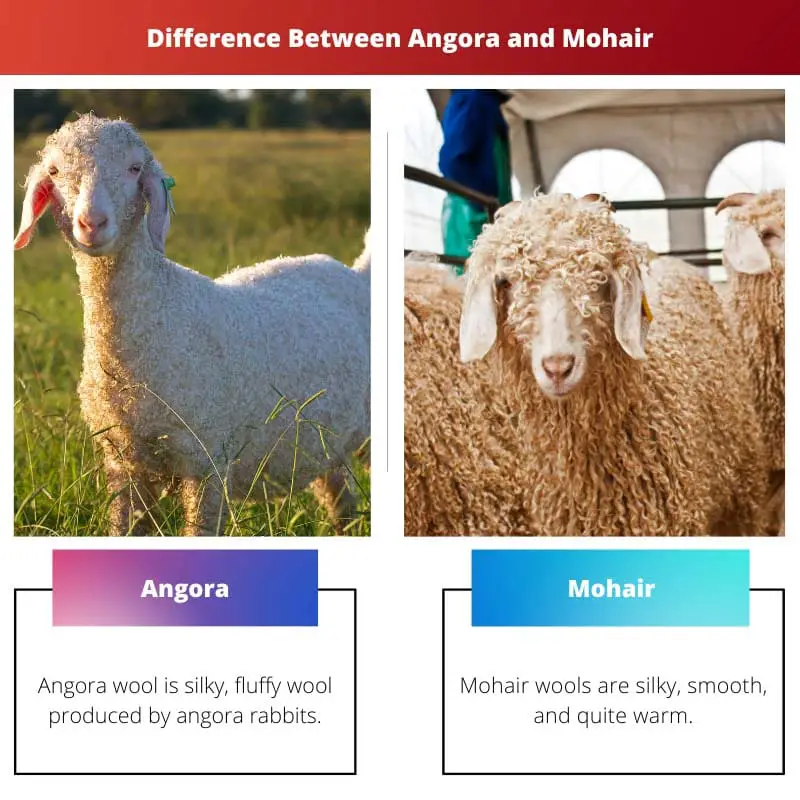Different kinds of wool and fibers are used to make different types of apparel and clothes. Angora and Mohair are the opulent fiber that is used to make high-quality sweaters, mittens, accessories, hats, etc.
Although, people get confused with the two because of the name Angora, as it is the name of wool as well as the name of the goat from which the Mohair wool is extracted.
To clear the confusion we have discussed the details of these wools along with their difference, properties, qualities, etc.
Key Takeaways
- Angora fiber comes from the soft fur of Angora rabbits, while mohair is produced from the hair of Angora goats.
- Mohair is more durable and resilient than Angora, known for its incredible softness and warmth.
- Angora fibers are prone to shedding, while mohair is less likely to shed and has a natural sheen.
Angora vs Mohair
Angora fibre comes from the hair of the Angora rabbit and is fine, fluffy, and warm, while mohair fibre comes from the hair of the Angora goat and is curly, lustrous, and durable. Angora is used in winter clothing, while mohair is used in a variety of clothing and home decor items.

Angora is a beautiful and silky substance. It’s also cozy, lightweight, and simple to feel. It’s also stiff, which is why it’s occasionally blended with flexible fibers to add suppleness.
Angora is a luxury fiber that is used to knit clothing and weave luxurious garments. The rearing of Angora rabbits provides the wool. This rabbit’s fur shears three or four times a year, and at that time the wool is collected.
Mohair has a distinctive luster and gloss, as well as being sturdy and tough. It’s also a lot smoother than the wool from other sheep. It’s also a lot more stretchy than other forms of wool and isn’t as combustible.
It also works with a wide range of dyes. More importantly, Mohair is an excellent insulator and is great for use in the winter.
Comparison Table
| Parameters of Comparison | Angora | Mohair |
|---|---|---|
| Definition | Angora wool is silky, fluffy wool produced by angora rabbits. | Mohair wools are silky, smooth, and quite warm. |
| Felting | Felts easily and quickly | Resistant to felting |
| Thickness | Finer | Thicker than Angora |
| Source | Angora rabbits | Angora goats |
| Tensile strength | High tensile strength | Less tensile strength as compared to Angora |
What is Angora?
Angora wool fibers are considered the finest sorts of wool fibers in the world, making them exceptionally smooth and soft.
Angora wool is exceptionally fluffy, and because the cores of Angora rabbit fur are porous, it retains warmth better than most other types of wool.
Furthermore, Angora wool doesn’t have the allergenic qualities that other forms of wool do, giving it the characteristic of an ideal fiber for persons who are allergic to animal fur.
History of Angora: Ankara, Turkey’s capital was originally known in Europe as Angora, and it was here that Angora rabbits were first reared.
Although it’s unknown when Angora rabbits were originally introduced, by the 18th century, these incredibly fluffy bunnies had traveled across Europe.
The first evidence of substantial Angora wool manufacturing in the United States comes from the early twentieth century.
Angora wool shawls, sweaters, and other goods were swiftly produced by American manufacturers who saw it as more than just an aesthetic fiber.
Production of Angora fiber: As we know Angora fiber is considered the most luxurious and high-quality yarn. And to get this fiber there is a distinct procedure through which it is harvested from the Angora rabbits.
The steps to produce Angora fibers are listed below:
- Angora fur cultivation: Most Angora rabbit varieties develop complete coats of fur in 3-4 months.
- Shearing or “plucking,”: After about 4-5 months, some varieties of Angora rabbits begin to shed their fur spontaneously. The procedure of removing Angora fur that is about to be shed is called “plucking,”
- Cleansing and sorting: Angora manufacturers pick over the hair strands to eliminate mats and other rough debris such as guard strands after an Angora rabbit’s fur has been extracted.
- Coloring and spinning: The spun fabric is made from cleansed Angora fur. Angora fur is originally white, cream-colored, or light-brown, but this luxuriant wool fiber can also be dyed in different colors to give it a unique look.

What is Mohair?
The hair of the Angora goat is used to make Mohair. It’s a sort of fabric that’s simultaneously elastic and resilient, allowing it to be employed in a variety of industries, including garments and textiles.
The sole disadvantage of this fabric is that it has no inherent resilience to humidity or water, making it necessary to safeguard it.
History of Mohair: Angora goats are thought to have originated in their present form in Tibet and then traveled to Turkey.
For millennia, these goats were solely reared in Turkey, yet evidence of Mohair wool in England traced back to the seventh century, indicating that this material has been extensively exported for centuries across Europe, Asia, and the Gulf Region.
Production of Mohair fiber: Mohair fiber is much smoother and shinier as compared to other fiber extracted from other sheep. To obtain this lustrous fiber the manufacturer of Mohair fiber follow certain procedures such as:
- Shearing: In this process, the goat is first immobilized so that in the process of shearing they do not hurt themselves. A large scissor is employed to shear the fur of the angora goats.
- Washing and Cleansing: Once the fur is collected it is being washed and cleaned thoroughly to remove any coarse substance or impurities from the fiber.
- Carding: Because the fiber from Angora Sheep is uniform in size, it is simple to turn clumps of this wool into threads.
- Spinning of the yarn: The strands are subsequently twisted into yarn, which is made with automated equipment or treadle spinning.

Main Differences Angora and Mohair
1. The weight of Angora fiber is much lighter than Mohair.
2. To make Angora yarn flexible, it must be combined with different kinds of wool, although Mohair can be knitted on without being combined with other kinds of wool.
3. Angora rabbits require frequent grooming to prevent felting and clogging of the wool, whereas Angora goats require minimal grooming.
4. Owing to its fineness, Angora wool has a velvety feel to it while Mohair has a rougher texture.
5. Angora goats were first discovered by Charles V while Angora rabbits were first discovered by French sailors.

- https://www.sciencedirect.com/science/article/pii/S0921448899001169
- https://www.sciencedirect.com/science/article/pii/S0921448802000901
